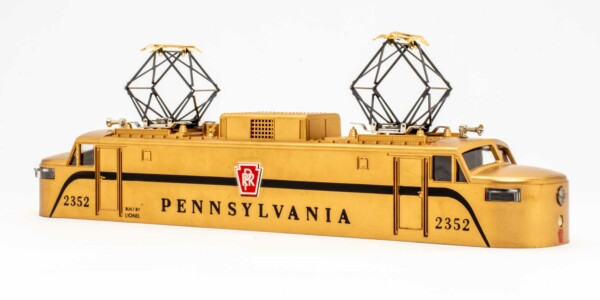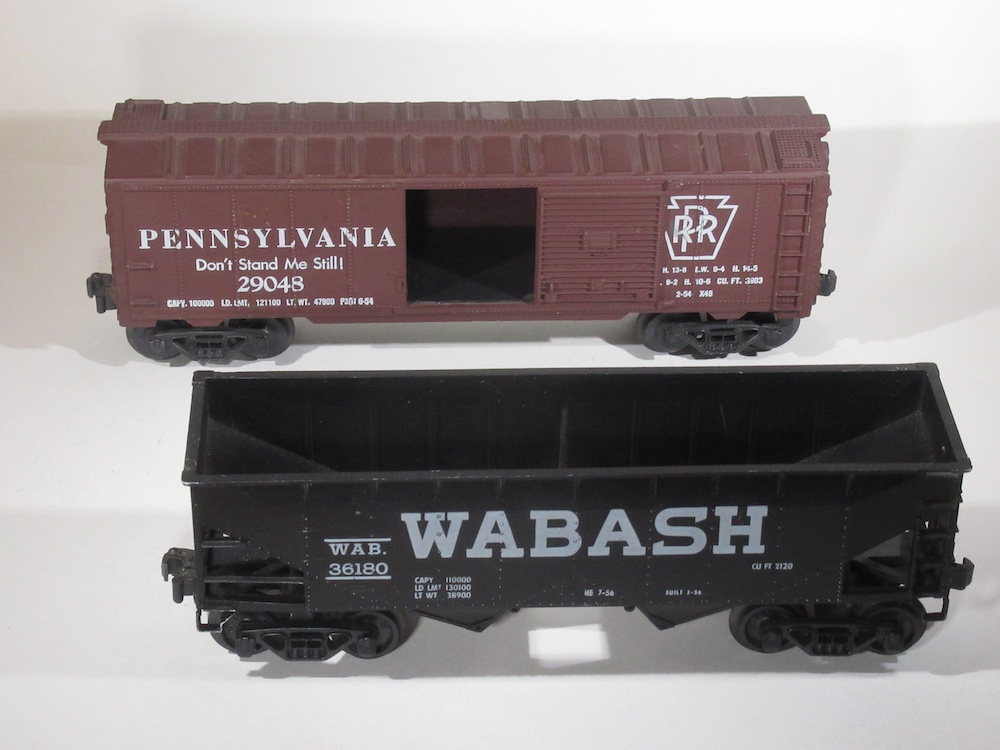Madison Hardware’s gold Lionel EP-5 shells are a story akin to getting lemons and making lemonade.
The store sold unusual Lionel trains from all periods of production. Lou Shur and Carl Shaw, the brothers who ran the legendary retail outlet in New York City until it closed in 1989, seemed to have endless supplies of brand-new locomotives and outfits along with oddities that fascinated all toy train collectors.

Among the most beautiful and interesting items offered by Madison in its final decade before being sold and moved to Detroit were the striking gold-painted and black-lettered body shells for EP-5 electric-profile locomotives.
The story behind those collectible plastic parts came to life when Len Carparelli, the owner of L&L Model Train Restoration Co., looked back on his 50 years in business for the cover story of the November-December 2022 issue of Classic Toy Trains. We’ll share a bit of the story here, with more to come in CTT.
Four great models
Lionel had introduced for 1956 an O gauge model of the recently developed EP-5 from General Electric. The prototypes were built for the New York, New Haven & Hartford Railroad; Lionel applied its striking orange-and-black paint scheme to the products. Coincidentally, executives at the A.C. Gilbert Co. had the same idea and also in 1956 announced an S gauge replica.
Lionel kept the No. 2350 New Haven EP-5 in its catalog as the motive power for sets and as a separate-sale item through 1958. In the meantime, it brought out three more versions: 2351 Milwaukee Road (cataloged 1957-58); 2352 Pennsylvania RR (cataloged 1958-59); and 2358 Great Northern (cataloged 1959-60). Each of them was also used to lead sets and could be bought individually.
By the time Lionel released the 2358, however, consumers appeared to have tired of the electric. Sales failed to meet expectations, and many more gray plastic body shells were molded than needed. Lionel was left with unused inventory gathering dust.
Before the 1960s came to an end the original Lionel Corp. had licensed the rights to manufacture and market its toy trains to General Mills. It also sold many finished and unfinished trains to Madison Hardware. According to Len, the surplus EP-5 shells were among them.
Something different
As Len explained in the CTT article, he was already working as a painter for Madison. Lou and Carl continued to find projects for him to make use of the supply of body shells and locomotive frames they had bought.
In the early 1980s, Lou approached Len about doing something with the EP-5 shells. They debated whether to paint and letter the few dozen pieces for railroads other than those chosen by Lionel 25 years earlier.
Ultimately, Lou concluded it would be best to stick with what Lionel had done. The 2352 Pennsylvania struck him as the best candidate, although he thought it should be different.
As Len put it, “Lou’s original idea was to reverse the gold and maroon colors on the 2352. I disagreed, saying black would be more striking. I also thought painting the ‘box’ on the roof maroon would look pretty silly.”
After talking further, Lou and Len decided to paint the shells gold, with the lettering being black. According to Len there were somewhere between 24 and 36 of them. Paid $10 each, Len moved quickly to get everything finished so he could collect his money.
He wrapped up the job in three weeks and brought the finished shells to Madison. He had painted, lettered, and decaled them exactly as Lou had wanted.
Lou and his top mechanic, a fellow named Joey Lomando, inspected them. They agreed the work was top-notch and the shells would be winners, particularly if they were promoted well to hobbyists.
Modern versions
The original few dozen gold EP-5 shells sold out in a flash, and Lou and Carl were left with only regret they didn’t have more of them to paint.
Today, Len is painting brand-new versions of that instant classic. Anyone interested can visit his website; information is there to contact him for details.













